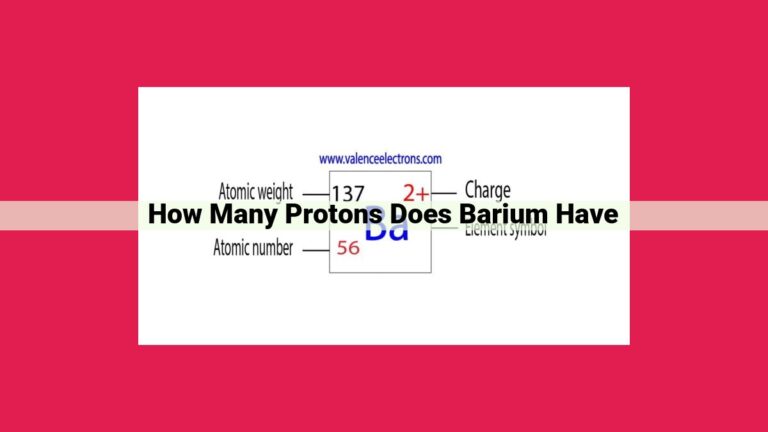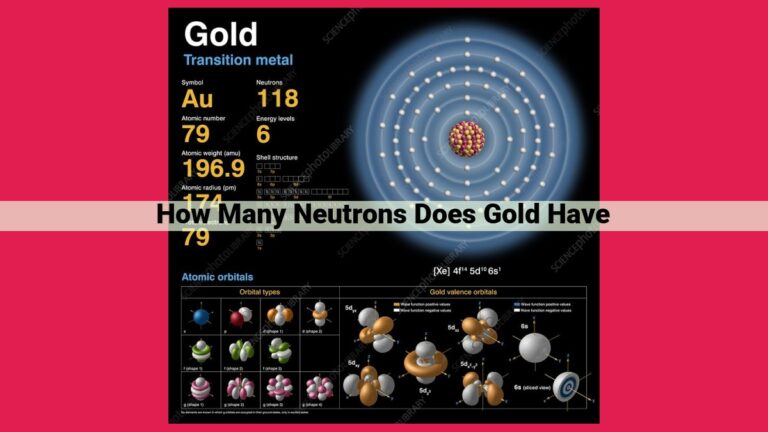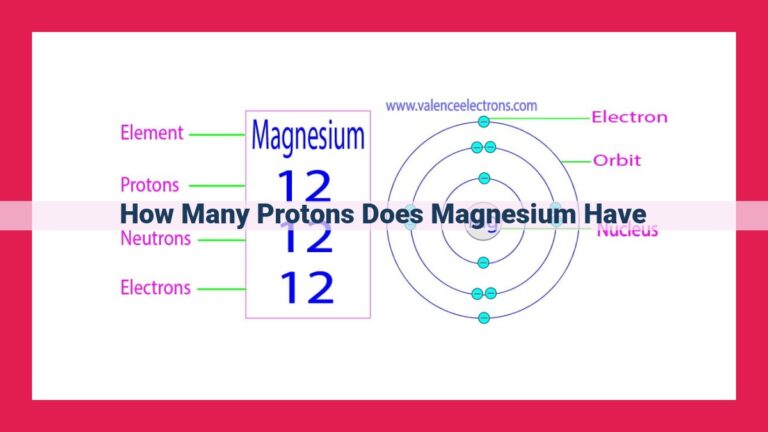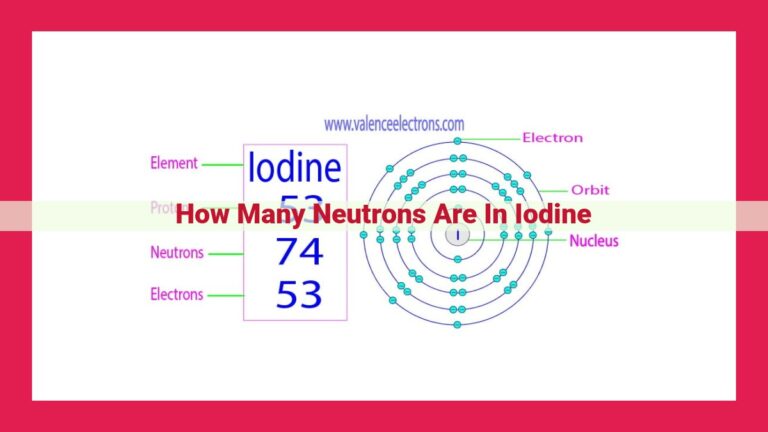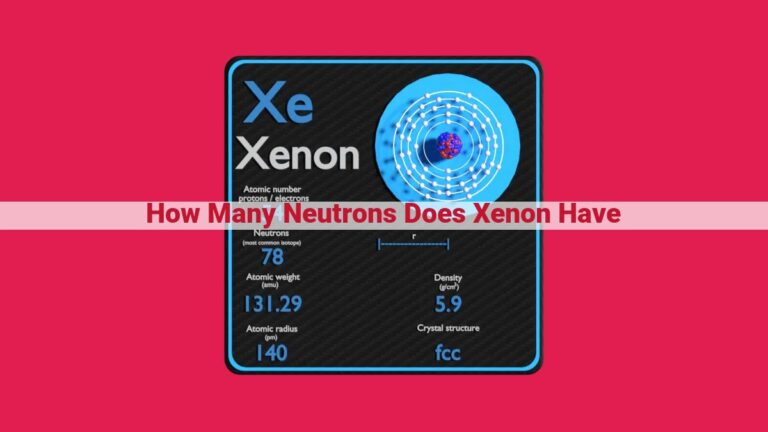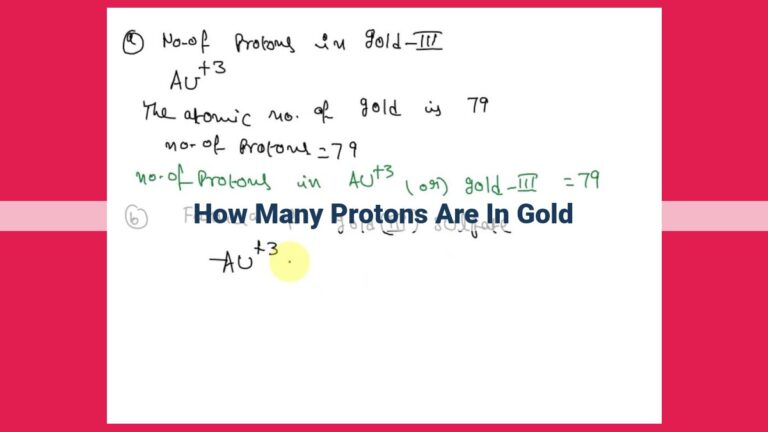Quark Composition Of Protons: Unraveling The Building Blocks And Electric Charge
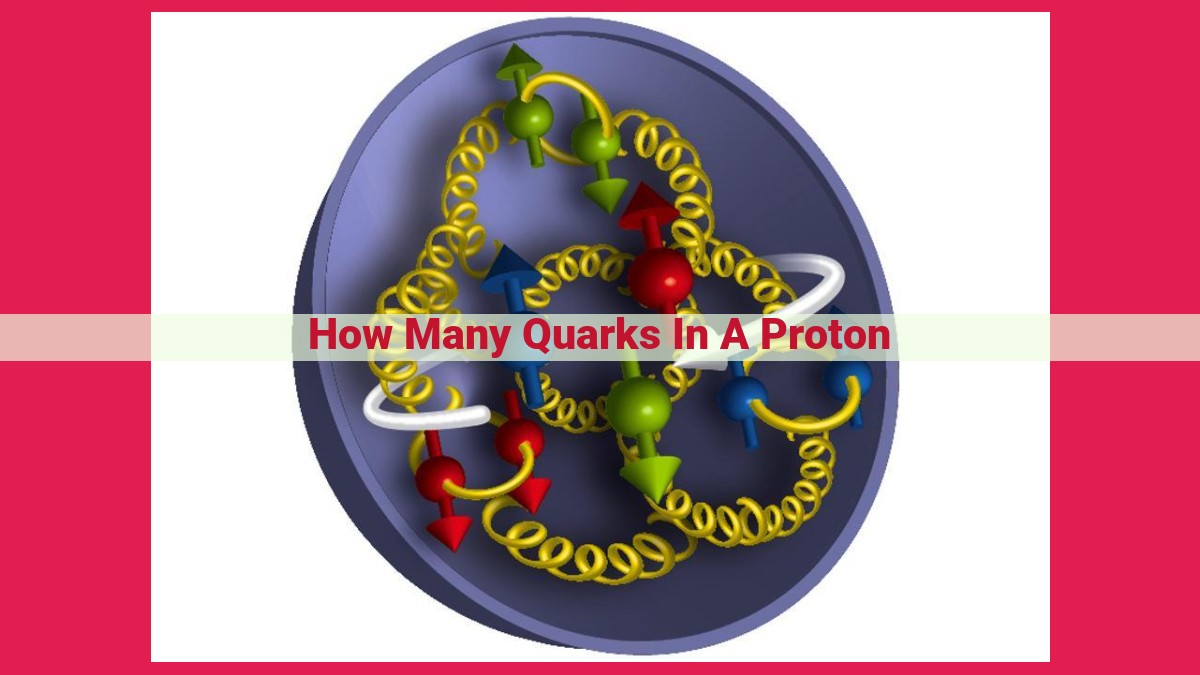
Protons, subatomic particles found in atomic nuclei, comprise two up quarks and one down quark. Up quarks have a positive charge while down quarks have a negative charge, resulting in a proton’s overall positive charge. This fundamental quark composition determines the proton’s electric charge and provides the building blocks for its mass.
Inside the Heart of Matter: Unveiling the Proton’s Quarky Secrets
In the tapestry of our universe, a subatomic dance unfolds, where particles of immense power and mystery orchestrate the foundations of existence. Among these enigmatic entities, the proton stands tall, an indispensable character within the atomic realm. Delve into this scientific narrative as we unravel the extraordinary makeup of protons, exploring the intricate world of quarks and charges that define their very essence.
Up Quarks: The Positive Force
Within the proton’s core, tiny particles known as quarks hold the key to its enigmatic nature. Up quarks, with their positive electric charge and fractional spin, form the foundation of protonic architecture. Two of these up quarks reside within each proton, contributing their positive charge to the overall makeup of this subatomic powerhouse.
Down Quarks: The Negative Counterbalance
Balancing the up quarks’ positive energy, down quarks enter the protonic equation. These particles, carrying a negative charge and fractional spin, contribute to the delicate balance within the proton. Their presence ensures a harmonious coexistence of opposing forces, shaping the proton’s unique characteristics.
Delving into the Enigmatic World of Protons: Unraveling the Mystery of Up Quarks
In the realm of physics, protons reign supreme as the cornerstone of atoms. These microscopic entities, found within the atom’s nucleus, harbor a rich tapestry of subatomic particles known as quarks. Among these quarks, the up quark plays a pivotal role in shaping the proton’s enigmatic nature.
Up Quarks: The Building Blocks of Positive Charge
Imagine a tiny universe teeming with fundamental particles. Up quarks are one such particle, classified as elementary particles, meaning they cannot be further subdivided. These ethereal entities possess a positive electric charge, a defining characteristic that sets them apart.
Fractional Spin and Proton Occupancy
Intriguingly, up quarks exhibit fractional spin, a peculiar property that distinguishes them from other particles. Their spin is measured in units of half-integers, and in the case of up quarks, this spin is +1/2.
Residing in Proton Pairs
Protons, the enigmatic building blocks of our universe, are not composed of a single type of particle. Instead, they harbor two up quarks within their core. These up quark companions contribute significantly to the proton’s overall positive charge.
Contribution to Proton’s Positive Charge
Each up quark carries a +2/3 electric charge, and with two up quarks residing in each proton, the proton acquires a net positive charge of +1. This positive charge is fundamental to the proton’s existence, allowing it to interact with other charged particles and form stable atoms.
Unlocking the secrets of up quarks unravels the intricate tapestry of protons. These positive charge carriers play a vital role in shaping the proton’s electrical properties and influencing its behavior within the atomic realm. Understanding the enigmatic nature of up quarks is a testament to the captivating journey of scientific exploration, where the smallest of particles hold the keys to unlocking the mysteries of our universe.
Down Quarks: The Hidden Negative Force in Protons
Introduction:
Protons, the positively charged particles found in atomic nuclei, are not simple entities but are composed of even smaller particles called quarks. Among these quarks, down quarks play a crucial role in determining the proton’s overall charge.
Introducing Down Quarks:
Down quarks are elementary particles that possess a negative electric charge and a fractional spin. Unlike up quarks, which have a positive charge, down quarks carry a negative charge. This inherent charge property makes them an essential component in understanding the proton’s overall charge.
Down Quarks in Protons:
Protons are composed of three quarks, and one of these quarks is a down quark. The presence of this single down quark in the proton’s structure has a profound impact on its overall charge.
Charge Contribution of Down Quarks:
The negative charge carried by the down quark contributes to the overall electric charge of the proton. Since the proton has a net positive charge, it implies that the positive charges from the up quarks outweigh the negative charge from the down quark.
Balancing the Proton’s Charge:
The number of up and down quarks within a proton is not arbitrary. The presence of two up quarks and one down quark ensures that the proton has a net positive charge. This balance of charges is crucial for the stability and behavior of protons within atoms and molecules.
Conclusion:
Down quarks, with their negative charge, are indispensable components of protons. Their presence in protons, alongside up quarks, determines the proton’s overall positive charge. This understanding of the proton’s quark composition and charge is essential for comprehending the fundamental nature of matter and the behavior of atoms and molecules.
The Proton’s Electric Charge: Unveiling the Secrets of Matter’s Building Blocks
In the realm of atomic particles, the proton reigns supreme as the enigmatic core of every atom. Composed of an intricate tapestry of quarks, these subatomic particles endow the proton with its unique electric charge, shaping its existence and behavior.
Defining Electric Charge: The Proton’s Fundamental Property
Electric charge, an intrinsic property of matter, refers to the ability of particles to attract or repel each other. Protons, in particular, possess a positive electric charge that plays a pivotal role in their interactions and the stability of atoms.
Unraveling the Proton’s Charge: A Quark-Based Calculus
The proton’s electric charge is intimately intertwined with its constituent quarks. Inside each proton reside three quarks: two up quarks and one down quark. These quarks carry fractional electric charges, with up quarks bearing a positive charge of +2/3 and down quarks carrying a negative charge of -1/3.
By combining these fractional charges, we can determine the overall charge of the proton:
- 2 x (+2/3) = +4/3 (charge from up quarks)
- 1 x (-1/3) = -1/3 (charge from down quark)
- Total charge = (+4/3) + (-1/3) = +1
Intriguingly, the net charge of the proton is always positive due to the dominance of up quarks. This positive charge is crucial for the proton’s stability, as it balances the negative charge of electrons orbiting the atomic nucleus.
Governing Rules of Proton Charge: An Unbreakable Covenant
The electric charge of protons adheres to a set of inviolable rules:
- Conservation of Charge: The total charge within an atom must remain constant. The positive charge of the protons is precisely balanced by the negative charge of the electrons, maintaining the atom’s electrical neutrality.
- Quantization of Charge: Electric charge manifests in discrete units, known as the elementary charge. The charge of a proton is always a multiple of the elementary charge, which is the smallest indivisible unit of electric charge.
The proton’s electric charge, determined by its intricate quark composition, is an indispensable property for understanding the behavior of matter at the atomic level. This charge dictates the proton’s interactions, ensuring the stability of atoms and shaping the chemical reactions that shape our world. The proton, a tiny yet mighty particle, stands as a fundamental building block of the universe, its electric charge playing a central role in the symphony of life.
Proton Mass: The Heaviest of the Fundamental Particles
In the vast tapestry of the atomic universe, protons stand out as the anchors of atomic nuclei, their positive charges holding electrons in a delicate dance around them. But what gives protons their mass, the substance that allows them to exert their gravitational pull? The answer lies in the very building blocks of these enigmatic particles: quarks.
The Elusive Quarks
Quarks, the smallest known particles of matter, come in six different flavors, or “types.” Up quarks, with their fractional positive charge, are among the most fundamental building blocks of protons. Down quarks, their counterparts with a fractional negative charge, also contribute to the proton’s composition.
The Mass of a Proton
The mass of a proton primarily stems from the combined mass of its constituent quarks. Each up quark contributes about 2.3 million electronvolts (MeV) of energy, while each down quark adds roughly 4.8 MeV. This may seem like a small amount, but when combined, these values translate into a significant mass for the proton: approximately 1,875.6 atomic mass units (amu). The amu is the standard unit for measuring the mass of particles smaller than atoms, and it is defined as 1/12th the mass of a carbon-12 atom.
The Importance of Mass
The mass of a proton is crucial for its existence and behavior. It governs the strength of the electrostatic forces between protons and electrons, thereby determining the stability and structure of atoms. Additionally, proton mass plays a role in nuclear reactions, influencing the rates and outcomes of these processes that fuel stars and power nuclear reactors.
The mass of a proton, though vast compared to other subatomic particles, is a testament to the intricate interplay of fundamental forces and the remarkable properties of quarks. Understanding this mass is key to unraveling the mysteries of nuclear physics and gaining a deeper appreciation for the building blocks of our universe.
Quark Composition: Unraveling the Building Blocks of Protons
Delving into the Quintessence of Matter
In the enchanting realm of nuclear physics, protons reign supreme as the steadfast guardians of atomic nuclei. These enigmatic particles, the linchpins of all matter as we know it, possess an enigmatic charm that has captivated scientists for centuries. At the heart of their existence lies a fascinating interplay of fundamental particles known as quarks.
The Enchanted Trio: Baryons and Protons
Quarks, the elusive architects of protons, belong to a captivating group of particles called baryons. These enigmatic entities, which also include neutrons, form the cornerstone of our universe’s building blocks. Among the baryon family, protons stand out as the sole occupants of atomic nuclei, their unshakeable presence anchoring all elements in the periodic table.
The Magical Triad: Unraveling the Proton’s Inner Sanctum
Behold, the proton’s enigmatic composition: three quarks entwined in an intricate dance. This uncanny trio forms the very essence of the proton’s existence, dictating its properties and shaping its interactions within the atomic realm.
Delving deeper into this harmonious collaboration, we uncover a precise arrangement of two up quarks and one down quark. These quarks, each possessing a distinct charge, contribute their individual strengths to the proton’s overall electric charge. The up quarks, imbued with a positive charge, bolster the proton’s positive nature, while the down quark, carrying a negative charge, balances the equation, ensuring the proton’s overall positive charge.
The Symphony of Quarks: A Delicate Balance of Charge
The proton’s electric charge, a defining characteristic, arises from the delicate interplay of its constituent quarks. Up quarks, with their positive charge, contribute to the proton’s overall positive charge. Down quarks, bearing a negative charge, offset some of this positive charge, resulting in a net positive charge that imbues protons with their distinctive identity.
Unlocking the Secrets of Mass: The Quark’s Predominance
Mass, an intrinsic property of matter, plays a pivotal role in the proton’s existence. Astonishingly, most of the proton’s mass stems from the energetic dance of its quarks. Their restless interactions contribute significantly to the proton’s overall mass.
Atomic Mass Units: Measuring the Proton’s Weight
To quantify the proton’s mass, scientists employ the atomic mass unit (amu), a minuscule unit that serves as the standard measure for particle masses. With a mass of approximately 1 amu, the proton’s substantial mass underscores its importance in the nuclear realm.
